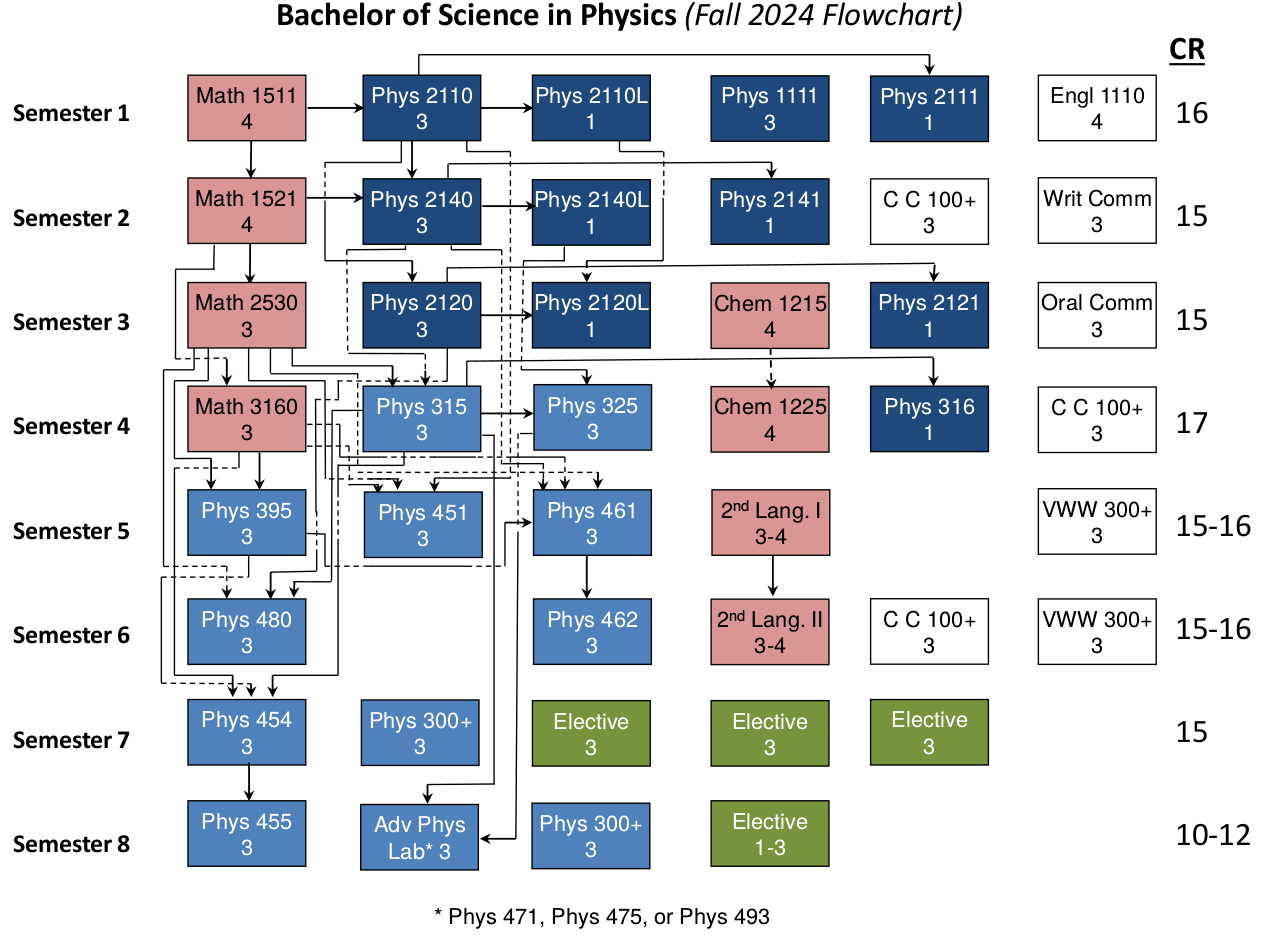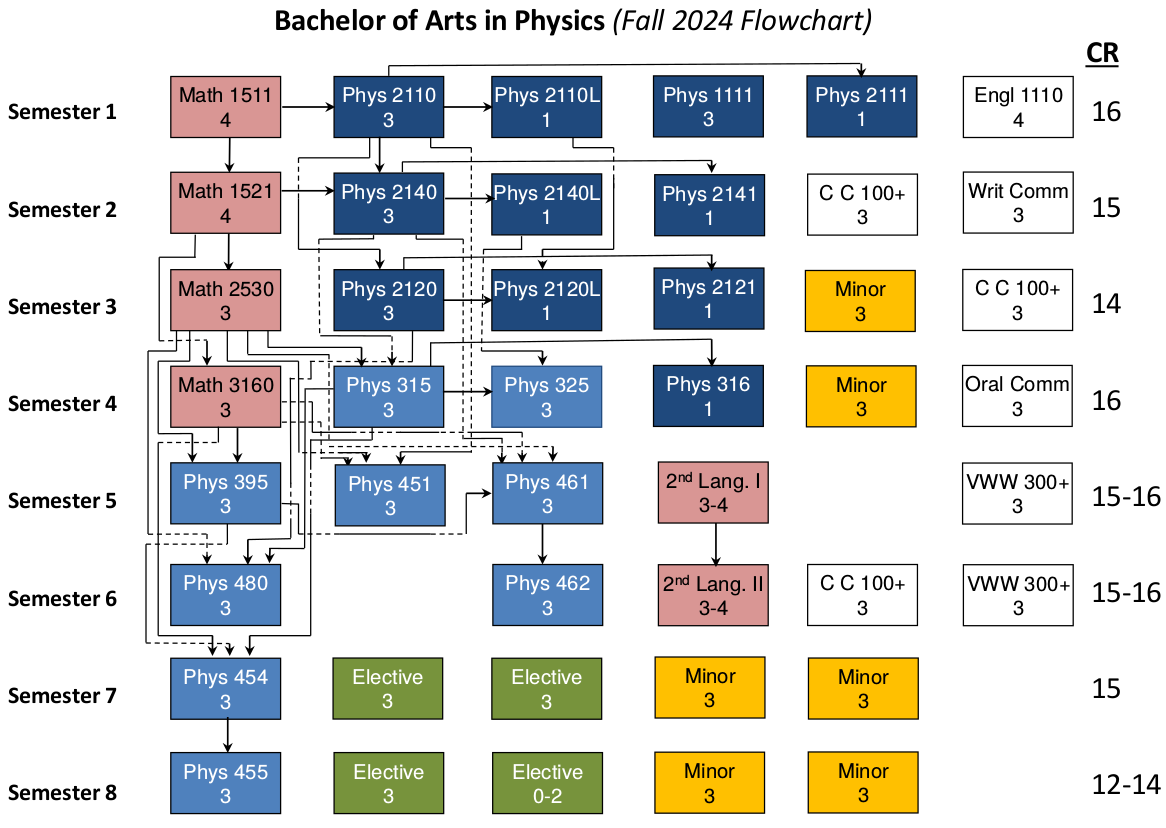For more information: physics-info@nmsu.edu
The Physics Department offers two different Bachelor degree programs in physics, both of which provide a solid foundation in the four main disciplines of physics; classical mechanics, quantum mechanics, electromagnetism, and thermodynamics.
Who is your academic advisor? You can easily find this out at my.nmsu.edu. Login there, and then go to Student Information.
The academic advisors for the Physics B.S. and B.A. programs are Michael Engelhardt, and Matthew Sievert.
Our Mission
The mission of the Physics program at New Mexico State University is to offer a degree preparing our graduating students for careers in a variety of scientific and technical areas as well as for graduate study in physics and related fields.
Program Educational Objectives of the Physics Program at New Mexico State University
Educational Objective 1: Competitiveness
Graduates are competitive in internationally-recognized academic, government and industrial environments.
Educational Objective 2: Adaptability
Graduates exhibit success in solving complex technical problems in a broad range of disciplines.
Educational Objective 3: Collaboration/Teamwork and Leadership
Graduates have a proven ability to function as part of and/or lead interdisciplinary teams.
Review of the Program Educational Objectives is performed by the Physics External Advisory Board, at least once every two years.
Bachelor of Science in Physics: The B.S. program requires a range of physics, mathematics, and chemistry courses and prepares students for a job or continued studies in physics or a related scientific, engineering or technological field.
Below is a typical 4-year schedule of classes for the B.S. program. NOTE: MATH 392 Intro to Ordinary Differential Equations has been renumbered to MATH 3160; other MATH courses have also transitioned to 4-digit numbers.

The NMSU B.S. Physics degree is the first ABET-accredited physics program in the nation. This accreditation means that our students achieve the following outcomes by the end of the program.
- An ability to identify, formulate, and solve broadly defined technical or scientific problems by applying knowledge of mathematics and science and/or technical topics to areas relevant to the discipline.
- An ability to formulate or design a system, process, procedure or program to meet desired needs.
- An ability to develop and conduct experiments or test hypotheses, analyze and interpret data and use scientific judgment to draw conclusions.
- An ability to communicate effectively with a range of audiences.
- An ability to understand ethical and professional responsibilities and the impact of technical and/or scientific solutions in global, economic, environmental, and societal contexts.
- An ability to function effectively on teams that establish goals, plan tasks, meet deadlines, and analyze risk and uncertainty.
| BS Physics | 2023 | 2022 | 2021 | 2020 | 2019 | 2018 | 2017 | 2016 |
| Enrollment | 40 | 37 | 33 | 24 | 32 | 33 | 33 | 31 |
| Degrees Awarded | 5 | 7 | 3 | 8 | 6 | 5 | 8 | 8 |
Bachelor of Arts in Physics: The B.A. degree allows more flexibility in choosing elective courses and requires a minor in another department.
Below is a typical 4-year schedule of classes for the B.A. program. NOTE: MATH 392 Intro to Ordinary Differential Equations has been renumbered to MATH 3160; other MATH courses have also transitioned to 4-digit numbers.

| BA Physics | 2023 | 2022 | 2021 | 2020 | 2019 | 2018 | 2017 | 2016 |
| Enrollment | 4 | 6 | 5 | 12 | 12 | 12 | 12 | 17 |
| Degrees Awarded | 0 | 1 | 0 | 2 | 1 | 1 | 2 | 3 |


